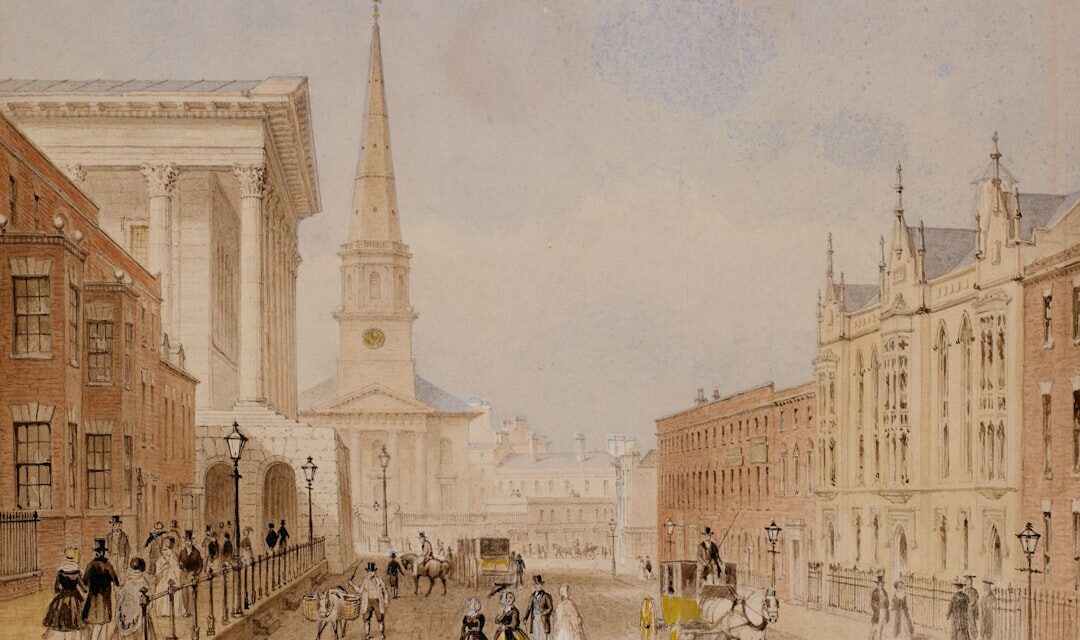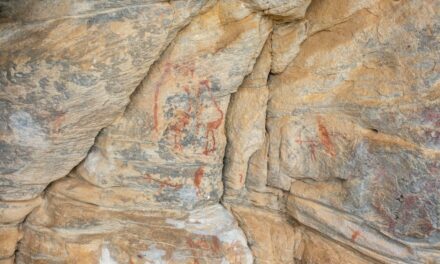The Pre-Raphaelite Brotherhood was a collective of English painters, poets and critics founded in 1848 by William Holman Hunt, John Everett Millais and Dante Gabriel Rossetti. The group formed in opposition to the Royal Academy’s promotion of idealised and formulaic art inspired by the Renaissance painter Raphael. The Pre-Raphaelites aimed to revive the detailed and vibrant style of painting that preceded Raphael, hence their name.
They drew inspiration from medieval and early Renaissance periods, striving to create art that was more sincere, naturalistic and emotionally evocative. The Pre-Raphaelite Brotherhood was significantly influenced by John Ruskin, a prominent art critic of the era who advocated for truth to nature in art. The group’s manifesto, penned by Dante Gabriel Rossetti, stated their intention to “study nature attentively, so as to know how to express her more faithfully”.
The Pre-Raphaelites rejected the academic conventions of their time, seeking to create art that was more true to life and emotionally resonant. Their work was characterised by meticulous attention to detail, vivid colours and complex compositions, often featuring themes from literature, mythology and history. The Pre-Raphaelite Brotherhood had a considerable impact on the development of British art and inspired a new generation of artists to explore novel ways of representing the world around them.
Summary
- The Pre-Raphaelite Brotherhood was founded in 1848 by a group of young artists who rejected the academic art of their time and sought to revive the sincerity and detail of early Italian art.
- Pre-Raphaelite art is characterized by its attention to detail, vibrant colours, and use of symbolism, often depicting medieval and romantic themes with a focus on nature and beauty.
- Influential Pre-Raphaelite artists include Dante Gabriel Rossetti, John Everett Millais, and William Holman Hunt, who were known for their distinctive styles and contributions to the movement.
- Pre-Raphaelite art often explores themes of love, nature, and spirituality, with subjects ranging from Arthurian legends to Shakespearean heroines, reflecting the artists’ fascination with the past and the natural world.
- The Pre-Raphaelite Brotherhood had a lasting impact on the art world, influencing later movements such as Arts and Crafts and Art Nouveau, and continues to inspire artists and enthusiasts today through exhibitions and reinterpretations of their work.
Key Characteristics of Pre-Raphaelite Art
The Influence of Medieval and Renaissance Periods
The Pre-Raphaelites were influenced by the medieval and early Renaissance periods, and their work often featured themes from literature, mythology, and history. They sought to create art that was more sincere, naturalistic, and emotionally evocative than the idealised and formulaic art of their time.
Symbolism and Storytelling
One of the key characteristics of Pre-Raphaelite art is its focus on symbolism and storytelling. Many Pre-Raphaelite paintings were inspired by literary works and mythology, and they often sought to convey complex narratives through their art. The Pre-Raphaelites were also known for their use of symbolism to convey deeper meanings and emotions in their work. They often incorporated symbols such as flowers, animals, and religious imagery into their paintings to add layers of meaning and evoke specific emotions in the viewer.
Beauty and Sensuality
Another key characteristic of Pre-Raphaelite art is its emphasis on beauty and sensuality. The Pre-Raphaelites often depicted beautiful women in their paintings, and they sought to capture a sense of emotional intensity and sensuality in their work. Their paintings often featured lush landscapes, rich fabrics, and intricate details that added to the overall sense of beauty and allure in their art.
Influential Pre-Raphaelite Artists

The Pre-Raphaelite Brotherhood was founded by William Holman Hunt, John Everett Millais, and Dante Gabriel Rossetti, who were all influential artists in their own right. William Holman Hunt was known for his meticulous attention to detail and his use of vibrant colours in his paintings. He was also known for his religious themes and his interest in capturing the emotional intensity of his subjects.
John Everett Millais was known for his technical skill and his ability to capture the natural world with great precision. He was also known for his ability to convey complex emotions and narratives in his paintings. Dante Gabriel Rossetti was known for his lush and sensuous depictions of women, as well as his use of symbolism and literary themes in his work.
Other influential Pre-Raphaelite artists include Ford Madox Brown, who was known for his historical paintings and his use of rich colours and intricate details. Edward Burne-Jones was known for his dreamy and ethereal depictions of mythological subjects, as well as his use of symbolism and allegory in his work. Elizabeth Siddal was a prominent female artist associated with the Pre-Raphaelites, known for her striking portraits and her own contributions to the movement.
These artists were all influential in shaping the style and themes of Pre-Raphaelite art, and their work continues to be celebrated for its beauty and emotional depth.
Themes and Subjects in Pre-Raphaelite Art
Pre-Raphaelite art often featured themes from literature, mythology, and history. The Pre-Raphaelites were inspired by the medieval and early Renaissance periods, and they sought to capture the emotional intensity and beauty of these subjects in their paintings. Many Pre-Raphaelite paintings were inspired by literary works such as Shakespeare’s plays, Tennyson’s poems, and the Arthurian legends.
They often sought to convey complex narratives through their art, using symbolism and allegory to add layers of meaning and emotion to their work. One of the key subjects in Pre-Raphaelite art was the depiction of women. The Pre-Raphaelites often portrayed women as beautiful and alluring figures, capturing a sense of emotional intensity and sensuality in their paintings.
They often depicted women in lush landscapes or richly detailed interiors, using vibrant colours and intricate details to convey a sense of beauty and allure. Another key theme in Pre-Raphaelite art was nature. The Pre-Raphaelites were known for their meticulous attention to detail and their ability to capture the natural world with great precision.
They often depicted lush landscapes, vibrant flowers, and intricate details that added to the overall sense of beauty and emotional depth in their work.
The Impact and Legacy of the Pre-Raphaelite Brotherhood
The Pre-Raphaelite Brotherhood had a significant impact on the development of British art and inspired a new generation of artists to explore new ways of representing the world around them. Their rejection of academic conventions and their focus on sincerity, naturalism, and emotional intensity paved the way for new movements in art such as Symbolism and Aestheticism. The Pre-Raphaelites also had a lasting impact on literature, inspiring writers such as William Morris and Algernon Swinburne with their lush and evocative depictions of beauty and emotion.
The legacy of the Pre-Raphaelite Brotherhood can also be seen in the continued popularity of their work today. Their paintings continue to be celebrated for their beauty, emotional depth, and intricate details. Many museums around the world have dedicated collections to Pre-Raphaelite art, showcasing the enduring appeal of their work.
The Pre-Raphaelites also continue to inspire contemporary artists who are drawn to their focus on symbolism, storytelling, and emotional intensity. Their influence can be seen in a wide range of artistic mediums, from painting and sculpture to literature and film.
Criticisms and Controversies Surrounding Pre-Raphaelite Art

Criticism and Controversy
Despite their lasting impact on the art world, the Pre-Raphaelites were not without their detractors. Some contemporary critics dismissed their work as overly sentimental or lacking in intellectual depth. Others criticised their depictions of women as overly idealised or objectifying.
Re-evaluating the Role of Women
The Pre-Raphaelites were also accused of being too focused on beauty at the expense of social or political commentary. In recent years, however, there has been renewed interest in exploring the controversies surrounding Pre-Raphaelite art. Scholars have re-evaluated the role of women within the movement, highlighting the contributions of female artists such as Elizabeth Siddal and challenging traditional interpretations of gender dynamics within Pre-Raphaelite paintings.
Cultural Appropriation and Awareness
There has also been a growing awareness of the cultural appropriation present in some Pre-Raphaelite works, particularly those that draw on non-Western cultures or historical periods.
Exploring Pre-Raphaelite Art Today
Today, Pre-Raphaelite art continues to captivate audiences around the world with its beauty, emotional depth, and intricate details. Many museums have dedicated collections to Pre-Raphaelite art, showcasing the enduring appeal of their work. These collections offer visitors the opportunity to explore the rich symbolism, storytelling, and emotional intensity present in Pre-Raphaelite paintings.
In addition to museum exhibitions, there are also numerous books, documentaries, and academic conferences dedicated to exploring the legacy of the Pre-Raphaelites. These resources offer valuable insights into the historical context of the movement, as well as its lasting impact on contemporary art and culture. Furthermore, contemporary artists continue to be inspired by the Pre-Raphaelites’ focus on symbolism, storytelling, and emotional intensity.
Their influence can be seen in a wide range of artistic mediums, from painting and sculpture to literature and film. In conclusion, the Pre-Raphaelite Brotherhood was a groundbreaking movement that had a lasting impact on British art and culture. Their rejection of academic conventions and their focus on sincerity, naturalism, and emotional intensity paved the way for new movements in art such as Symbolism and Aestheticism.
Their legacy continues to be celebrated today through museum exhibitions, academic research, and contemporary artistic practice. While there have been criticisms and controversies surrounding their work, there is no denying the enduring appeal of Pre-Raphaelite art with its beauty, emotional depth, and intricate details.
If you are interested in learning more about art movements, you may also want to read about the Impressionism movement. This article on Impressionism provides a comprehensive overview of the movement, its key artists, and its impact on the art world. Understanding Impressionism can provide valuable context for appreciating the Pre-Raphaelite Brotherhood art movement and its place in the broader history of art.
FAQs
What is the Pre-Raphaelite Brotherhood art movement?
The Pre-Raphaelite Brotherhood was a group of English painters, poets, and critics formed in 1848. They aimed to reform art by rejecting the mechanistic approach of the Mannerist artists who followed Raphael and embracing the naturalistic style of the early Italian Renaissance painters before Raphael.
Who were the key members of the Pre-Raphaelite Brotherhood?
The key members of the Pre-Raphaelite Brotherhood were Dante Gabriel Rossetti, William Holman Hunt, and John Everett Millais. Other notable associates included Ford Madox Brown and Edward Burne-Jones.
What were the main characteristics of Pre-Raphaelite art?
Pre-Raphaelite art was characterized by its attention to detail, vibrant colors, and a focus on nature and medieval themes. The artists often depicted romantic and literary subjects, and their works were known for their intricate symbolism and emotional intensity.
What impact did the Pre-Raphaelite Brotherhood have on the art world?
The Pre-Raphaelite Brotherhood had a significant impact on the art world, influencing the development of the Arts and Crafts movement and the Aesthetic movement. Their emphasis on realism and attention to detail also paved the way for the later Symbolist and Art Nouveau movements.
What are some famous works of art associated with the Pre-Raphaelite Brotherhood?
Some famous works of art associated with the Pre-Raphaelite Brotherhood include “Ophelia” by John Everett Millais, “The Lady of Shalott” by William Holman Hunt, and “Beata Beatrix” by Dante Gabriel Rossetti. These paintings are renowned for their beauty and emotional depth.




